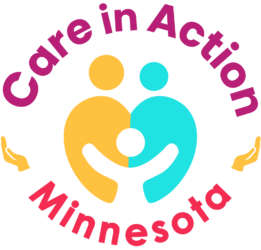
Childhood is a time of rapid development. Risk and opportunity are present at every point, from the critical foundation set in early childhood to the forming of their identities in adolescence.
In our Prevention page, we explain some of the promising opportunities to help buffer the impacts of negative experiences. Below, we discuss the risks, potential consequences and causes of child abuse and neglect.
Every child is filled with tremendous promise – and we have a shared obligation to protect & foster their potential.
The stress response, also known as the “fight or flight” response, comprises the physiologic changes that occur with any encounter of stress to an individual. Toxic Stress responses include a prolonged or permanent abnormal physiologic response to a stressor with risk of end organ dysfunction.
Abuse and neglect are often associated with factors and conditions causing families to experience an overload of toxic levels of stress. A lack of access to basic needs and the weight of poverty, especially, can overload parents’ abilities to provide the supportive relationships children need. Depression or other mental health challenges can also pile on to slow down parents’ responses to children’s needs.
Children who experience early life toxic stress and feel the immediate emotional effects of abuse and neglect—isolation, fear, and an inability to trust—can see those experiences translate into lifelong consequences; including being at increased risk for a number of problematic developmental, health and mental health outcomes, including learning problems (e.g problems with inattention & deficits in executive functions), internalizing symptoms (e.g depression, anxiety), externalizing symptoms (e.g oppositional defiant disorder, conduct disorder, aggression), and PTSD. Even well into adulthood, they can continue to show increased risk for psychiatric disorders, substance use, serious medical illnesses and lower economic productivity.
While early exposure to prolonged toxic stress can disrupt healthy brain development, it does not set one’s future in stone.
When we ensure that communities are equipped to support people who are experiencing toxic levels of stress to counteract and buffer those risks, we make resilience and prevention a real possibility.
It’s important to note that many poor families are well adjusted, competent, and do not express their stress in violent or otherwise hurtful ways. Many children who live in poverty are able to perform well in school and socially. These children may have protective factors, such as affectionate parents, high self-esteem, or a role model that helps them to achieve these positive outcomes.
Public policies can help to create the safe, stable environments that children need to thrive. However, they’ve often instead channel serious stress into particular communities, undermining child wellbeing.
For example, we know healthy, stable, affordable housing is critical to child and family health and well-being.
However, decades of unfair lending practices and policy decisions that have pushed Black, Indigenous and Latinx families into segregated communities where industries have been allowed to pollute the air they breathe and the water they drink; and where access to healthy food, clean open spaces, and reliable public transportation is limited – mean that Black and brown families are less likely to live near good jobs and more likely to experience pressure from low wages or long commutes.
Chronic stress can spark a toxic stress response, increasing the risk for depression, anxiety, or other causes of child neglect. The cascade of consequences from policy to parenting means that when we work on racial equity, we also help to prevent child abuse and neglect.
Additionally, there is a long documented history showing a pattern of disproportionate surveillance and separation of black and brown families. Within the child welfare system, research has consistently documented the influence of racial bias on decision-making. This occurs not only in the form of explicit and implicit biases among decision makers but also through implementation of decades of child welfare policies that largely reflect a White, middle-class parenting standard (Pryce & Yelick, 2021).
In this science talk, David Williams of the Harvard T.H. Chan School of Public Health looks at the social and behavioral factors–including socioeconomic status, race, discrimination, and place–that play a role in triggering toxic stress for children and adults. He also discusses what effective solutions for reducing toxic stress and improving health must look like. Williams is the Florence and Laura Norma Professor of Public Health and a Professor of African and African American Studies and Sociology at the Harvard T.H. Chan School of Public Health and a Center-affiliated faculty member.
The pervasiveness of child maltreatment and its cost to children and society make child protection an issue of great national importance. Survivors of child abuse and neglect and their families often need public and private services, including medical care, counseling, child protective services, special education, and substance abuse treatment. Both abusers and victims also incur great cost to the public justice system.
A 2018 report estimated the lifetime economic burden of substantiated child abuse and neglect cases and child fatalities is approximately $592 billion nationwide.
